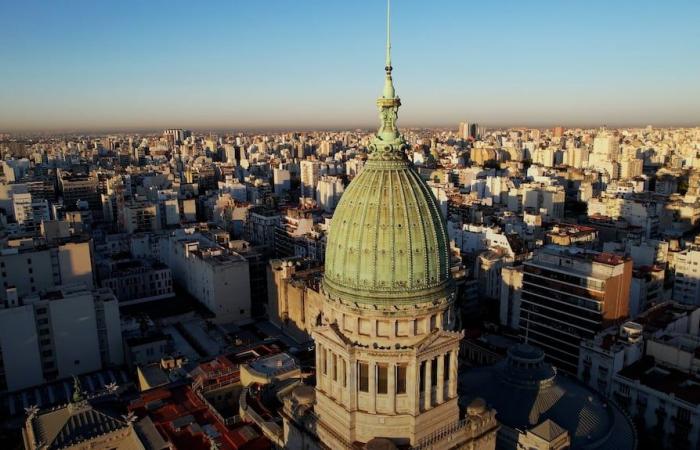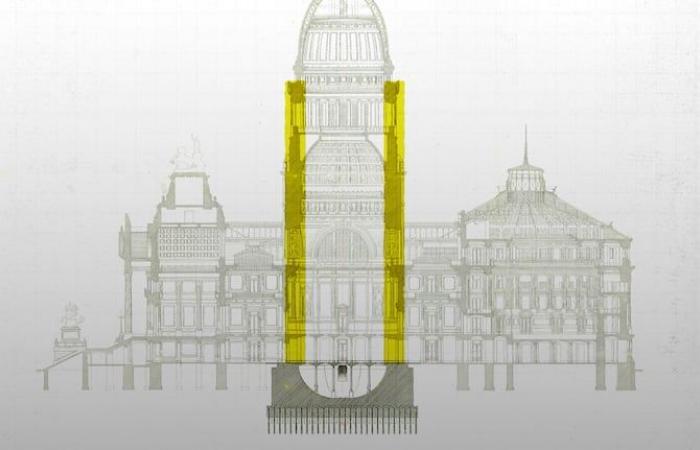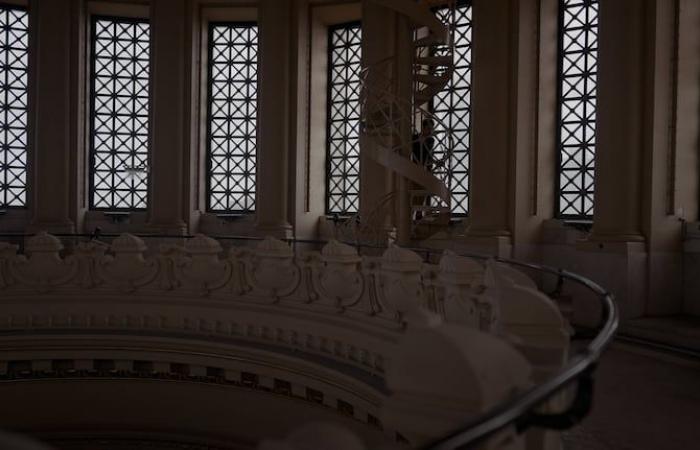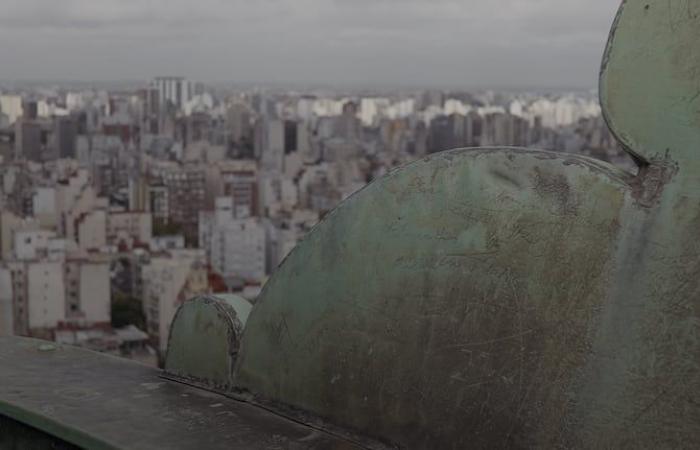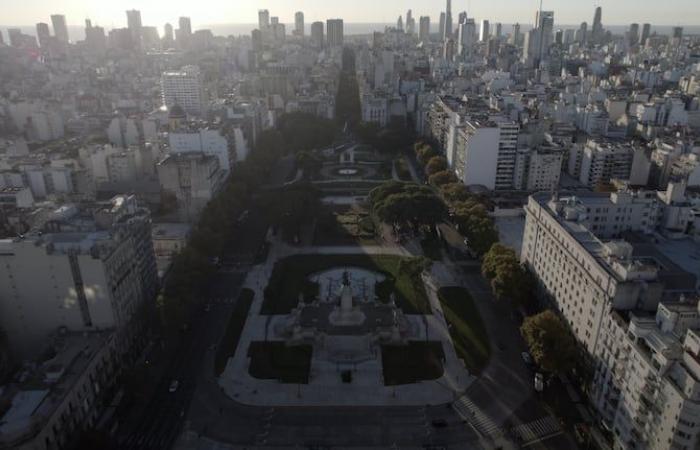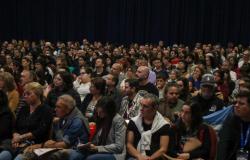On the surface, pure controversy, debates, discussions throughout the decades. Underground, what is not seen or known: The National Congress Palace has an inverted vaulta unique secret structure at least in Buenos Aires that compensates for the dome that rises, green and stylized, over the building.
Also read: Better fact than perfect: guide to specify tasks and pass dreams and projects to action
128 years after the beginning of the construction of Congress, by the hand of Pablo ChiesaBachelor of Museology and Researcher in the Senate Conservation and Restoration Department, we discovered the curiosities of the inverted vault and also – after raising its almost 200 steps – the surprising details of the dome, which It is not open to the public.
Unique in Buenos Aires
The palace began to be built in 1897. Until 1914 it was the most intense period of advances, but its facade was completed only in the 1940s.
At the beginning of the work, soil studies were carried out that determined that Some sectors needed extra resistance to support the dome that had been designed. These structures generate vertical and lateral loads by their own weight, which can cause thrusts in the walls or foundations.
Also read: Without borders: stories of women who travel alone and found their place in the world on the route
But there was a peculiarity that made this reinforcement indispensable: although the palace was going to be covered in Simile stone, it was finally resolved to change the material and do it with stone. Only the central tower, from the basement to the dome, weighs 30,000 tons.
The National Congress Palace has an inverted vault, a secret structure that compensates for the dome that rises, green and stylized, over the building. (Videolab image)
“Several domes in Europe have double cap, but I was checking historical plans and an inverted vault like this, in the foundations of the building, I only found, for the moment, in the Palace of the Congress of Buenos Aires,” says Chiesa.
The inverted vault of Congress has a depth of 6.82 meters. It is part of an engineering system planned by the Italian architect Vittorio Meano. “His idea was to transfer the thrust force of the perimeter walls that support the dome to the center, something much discussed in its time for its high cost: it was made with blocks of solid granite, well resistant, brought from Uruguay,” he says.
This structure has the same perimeter as the blue hall of Congress and attracts attention Its closeness with the subsequent excavation of the Underground.
“The palace surroundings suffered modifications throughout the 50 years of its construction. For example, line A was drawn in 1912. But it did not affect it at all because the building is extremely solid, with a brick masonry structure that alternates with granite blocks. Was thought to last centuries”, Underline the museologist.
Hoy, The inverted vault houses heating systems of the palace, which work (renewal of machinery through) since the beginning of the 20th century.
Modern and elegant
Another sector of Congress that is not open to visitors, for security reasons, is its striking dome. It is 82 meters high, but, considering the needle that the crown, the figure grows to approximately 90.
To access your privileged views you must first go up to the third floor of the palace, where the terrace extends.
From there you enter a snail staircase, which 116 steps through allowing a large ring that balcony on the blue room 35 meters high (5 more if taken from the street level). In its center, the chain sustains the majestic spider.
Installed in 1911, this spider weighs 2 tons, measures 5 meters high, 2 diameter and contains 331 lamps. It was made in bronze that was obtained from the foundry of bullet cartridges of the Nation War Arsenal.

The ascent to the Congress dome is not enabled to the public. (Photo: Juan Pablo Chávez/Videolab)
From there you have to climb another ladder, to reach a camera located inside the metal cap. It is located 60 meters high, which is equivalent to more than 20 floors.
The space houses some relics, such as the historic Malacate that, with manual traction, served to raise and lower the spider for annual maintenance. It is now a museum piece since it was replaced by a mechanical system.
Another element that causes astonishment in this place is the electric lighting system, very modern if it is considered to be projected in 1895 and was also designed for the facade of the congress.
Among the arms of the metal structure (fused in the United States and red by the antioxidant that was used in early 1900), windows called ocles were built that, during the day, let the sunlight pass. At night, when they turn on, they draw the characteristic silhouette of the palace.
From this point you have to climb a third snail staircase in the bowels of the building, which after 16 meters of ascent flows into the outer viewpoint of the dome.
“It is the most symbolic element of the palace. Its stylized form, not as wide as other domes, is not capricious: in its projection it was contemplated that it could be seen comprehensively from the May Avenue, which is also quite narrow,” clarifies the expert.
Discoveries
The dome was built in copper, the same material that was used, for example, in the statue of freedom, in New York. At the time it was located, there were already other domes with centuries of antiquity in Europe and that is why it was known that it was going to turn to the green color.
“It was never golden. The original color,” Chiesa says, “was quite opaque. Over time and by contact with the atmosphere the metal is oxidized, and with that process at the same time it is protected. The dome has two parts: A stone coated drum and on it, the copper cap”.
On the interior walls of the outer viewpoint, also green, the restorers found surprises. While the palace was inaugurated in 1906, the dome ended four years later. And today Messages drawn up by legislative employees and workers who participated in the construction are still seen.

On its structure, messages are still drawn by legislative employees and workers who participated in the construction. (Photo: Videolab)
There are many short names and texts, such as a “down the furry”, a legend that researchers place around the end of the 1920s, or perhaps 1930. It refers to Hipólito Yrigoyen, who was president just when the coup d’etat of 30 occurred.
“Very recently we discovered for the first time the signature of a legislator: Manuel Láinez, Senator between 1904 and 1913. He was the author of the so -called Láinez Law, from which the primary schools were created,” he says.
Another curious historical record was the discovery of two bullet holes in the dome, originated in the confrontation that occurred in the corner of the Rivadavia and Entre Ríos avenues during the coup of 30. In that sense, the facade and even the glass of some congress halls also have traces of the shooting, which were decided to preserve.
But maybe the most striking is Observe from the dome an unpublished landscape of Buenos Aires. The Obelisk, for example, is seen without its classic imposition. The courts of Boca, River and San Lorenzo are also clearly distinguished; Following the trace of Av. De Mayo, the Casa Rosada appears and on clear days the city of Colonia, Uruguay, is glimpsed.

From the dome you can see privileged landscapes of the city. (Photo: Videolab)
“The dome offers privileged views of the city center, and not by chance: around the square of the two congresses it was arranged to respect the heights so that the green structure is highlighted,” says Chiesa.
Although it has no daily use, regularly restoration specialists rise to the dome to monitor that there are no deterioration.
Witness of more than a century of history, and thanks to the reinforcement of the inverted vault, this structure resists, untouched, the own weight. And also that of all kinds of political inks that happen almost a hundred meters below.

